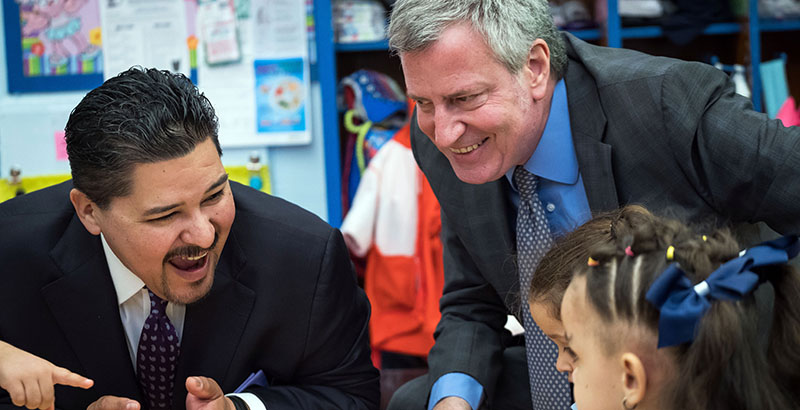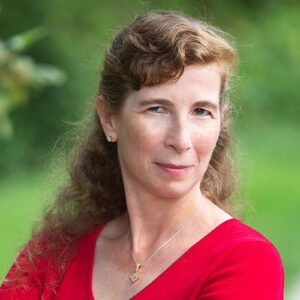Adams: 3 Things New York City’s Mayor and Chancellor Can Do Today to Integrate the Public High Schools

A version of this essay was originally published on the New York School Talk blog.
Updated Oct. 3
I give up.
New York City School Chancellor Richard Carranza has decreed that the most important issue facing our public high schools isn’t that SAT scores are well below the national average, that there’s a lack of access to Advanced Placement classes or that a majority of graduates who go to CUNY’s community colleges can’t handle the work.
No, according to the chancellor, the most important issue facing New York City public schools is that every institution isn’t a demographic replica of NYC as a whole. Our high schools are not diverse, and that’s the reason for all of the above woes.
Fine. You win.
The solution to dismal college readiness, flat SAT scores and too few AP courses, as well as anything else you can conceive of, is integration. So let’s get to it.
Yet here is where the chancellor throws up his hands in surrender.
While groups like Teens Take Charge propose plans (albeit mathematically impossible) for mixing low-achieving students in with high-achieving ones to at least obscure how many teens will continue to fail, the chancellor and Mayor Bill de Blasio have chosen to focus their energy on eight specialized high schools, out of more than 400.
They would love to change admissions to these specialized high schools, but the big bad New York State Assembly won’t let them.
Sorry, voters, we tried. Those racists in Albany stopped us, which is why systemwide failure continues. “Our previously thrown-up hands are tied, alas,” is more or less what the mayor said when he announced on Sept. 25 that he’d be taking a break from his two-year campaign to get rid of the Specialized High School Admissions Test.
I realize that de Blasio was very busy polling at 0 percent in his presidential campaign before finally dropping out. So, now that he’s been forced to focus on NYC once again, I, as a good, responsible citizen, offer three ways in which he could integrate NYC high schools in time for September 2020 admissions — and thus presumably fix everything that ails them.
Get rid of district/borough priority
Right now, the majority of high schools are citywide (a handful of zoned high schools remain, but their number is statistically insignificant). A student from Staten Island can theoretically apply to a school in the Bronx, one from Queens can apply to a school in Manhattan, and so on.
Except when it comes to district and/or borough priority schools. For instance, Manhattan’s District 2 (East Side south of 97th Street, West Side south of 59th Street, while avoiding the Lower East Side) schools are, theoretically, open to students citywide. But they give priority to those who live or attended middle school in District 2. As a result, a popular institution like Eleanor Roosevelt High School, which receives 49 applications for every general education seat, makes 100 percent of its offers to District 2 students or residents. ElRo, as it’s colloquially called, is 66 percent white and 19 percent free/reduced-price lunch, with 0 percent English learners.
At Baruch College Campus High School (also 49 applications for every gen ed seat), 98 percent of offers go to District 2 students or residents and 2 percent go to Manhattan students or residents. Baruch College is 43 percent white, 35 percent Asian, 39 percent free/reduced-price lunch and 1 percent English learners.
There are many others.
Luckily, this is an issue the mayor can fix on his own. He doesn’t need the state to agree. So … what’s the holdup?
Create a specialized high school for all who want one
We’ve all heard the mantra by now: The specialized high schools are not diverse. (They’re less white and more poor than the screened schools mentioned above, but that doesn’t count.) Plus, there aren’t enough of them to go around.
So why not make enough of them to go around?
About 30,000 students currently sit for the specialized high school test. In all eight schools, there are around 4,000 seats. What if NYC commits to making a seat available to absolutely every single test-taker? NYC has more than 400 high schools. Stuyvesant High School and Bronx High School of Science field incoming classes of about 900 each. Brooklyn Tech admits close to 2,000! To accommodate 30,000 applicants, you’d need maybe 20 more specialized high schools? Thirty? Even 40 out of 400 isn’t that many. And this time, we’d make sure to scatter them equally around the five boroughs so that students from Queens wouldn’t be forced to make three-hour round trips, the way some do now.
We wouldn’t need to build new buildings or hire new teachers. We could just convert existing schools. Kids would still need to rank the schools in the order they prefer (not all of them; odds are they’d stick to their geographic area, but if you want to rank all 40, go for it!), and their admissions test score would still determine priority, but with so many choices, there’s bound to be a broader range of academic abilities, not to mention race and gender, in each.
Luckily, this is an issue the mayor can fix on his own. The state needs to agree to get rid of the test, but not to create new specialized schools, the way former mayor Michael Bloomberg did. So … what’s the holdup?
Apply the 7 percent plan to screened high schools
Instead of administering the admissions exam, the mayor and chancellor would like to guarantee a specialized high school seat to the top 7 percent of students from every public middle school.
But, as noted above, there are only eight specialized high schools. There are more than 130 screened schools. Wouldn’t more students benefit and more diversity be achieved if the 7 percent plan were put into place for the screened rather than the exam schools?
These schools already use “holistic” measures like grades, test scores, interviews, portfolios and community service to admit their students. The mayor and chancellor believe these methods are superior to a single test (though both are confused as to why any family would choose a screened school — the choices they made for their own children notwithstanding).
According to them, these schools are already superior to the specialized schools. So shouldn’t we be fighting to give more underserved students access to them? Like, say, the top 7 percent from every public middle school? Or, since we’re talking about many more schools, why not the top 15 percent? Top 35 percent?
This is also an issue the mayor can fix on his own. The state has nothing to do with setting admissions criteria for screened schools.
So … I hate to bug … but… pssst … what’s the holdup, again?
Alina Adams is a New York Times best-selling romance and mystery writer, the author of Getting Into NYC Kindergarten and Getting Into NYC High School, a blogger at New York School Talk and mother of three. She believes you can’t have true school choice until all parents know all their school choices — and how to get them. Visit her website, www.NYCSchoolSecrets.com.
Column has been updated to clarify lack of college readiness among New York City high school graduates.
Help fund stories like this. Donate now!

;)
